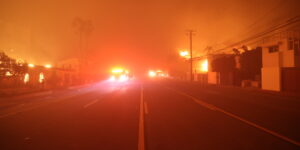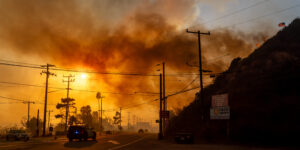Midyear reinsurance renewals are now leading indicators of Jan. 1 conditions, JLT Re said in a report released earlier this week, suggesting that a reinsurance pricing floor is not far away.
“In a trend that has gained traction in recent years, the January 1 renewal has become an event that marks the end of the annual reinsurance renewal cycle rather than the beginning,” the reinsurance broker said in a report released this week, “JLT Re Viewpoint Report–Change in the Air?”
This situation stands in contrast to years gone by when the outcome of Jan. 1 renewals was seen as indicative of what would follow for the rest of the year, the report notes.
Mike Reynolds, Global CEO, JLT Re, said in a statement about the report that while “pricing remained under pressure across most lines of business at June 1 and July 1, there were early signs of some stabilization in certain segments, albeit at historically low levels.
“The flattening trajectory of reinsurance rates during these renewals indicates change is again underway as increasing demand for reinsurance, an easing in the rate of alternative capital entry and reinsurer consolidation are coalescing to create an eventual pricing trough,” he said.
Referring to the increase in demand, the report noted that a number of buyers took advantage of low pricing and cyclically favorable terms and conditions, especially in U.S. property-catastrophe. Private carriers bought more wind cover as state-backed insurers continued to depopulate. In addition, the two biggest U.S. state-backed carriers—the Florida Citizens Property Insurance Corporation and the Texas Windstorm Insurance Association—together placed an additional $1.5 billion of cover.
On the M&A front, deals involving reinsurers have amounted to roughly $20 billion, or 7 percent of the sector’s dedicated capital, since the second quarter of 2014, by JLT Re’s count.
Diving down into alternative capital trends, the report notes that capital outstanding in the catastrophe bond market dipped slightly at midyear, and that cat bond issuance fell by nearly a third in the second quarter of 2015 compared to the corresponding period in 2014.
Although “alternative capital will remain a permanent fixture in the reinsurance market—almost irrespective of the magnitude of the next major catastrophe or interest rate rise—the stabilization in the rate of capital inflow indicates investors may be getting closer to target risk allocations,” the report says, reasoning that “returns are not what they used to be.” A chart in the report shows that average cat bond coupons, which were up between 10 and 12 percent in 2009, are down to nearly half that figure at about 6 percent. Over the same period, average expected losses have remained relatively stable about roughly 2 percent.
The report refers to these trends as possible “green shoots of change,” but notes that the trends play out against a backdrop of “nine consecutive major renewals of falling prices” with an abundance of capital pressuring the market.
Tracking a 65 percent jump in supply—dedicated reinsurance capital from traditional and alternative sources—from 2008 to 2014, against just a 10 percent rise in demand (premiums), the delivers this sobering conjecture at one point: “The supply glut is now so large that it is estimated that the impact of a $130 billion loss (following an event such as a powerful hurricane tracking across Florida and the East Coast, for example) would likely be restricted to one or two property-catastrophe reinsurance renewals.”
Source: JLT Re





















 California Insurers Required to Increase Home Coverage in High Risk Wildfire Areas
California Insurers Required to Increase Home Coverage in High Risk Wildfire Areas  Why All the Fuss? Fairness Regulations Meet Insurers’ Growing Use of AI
Why All the Fuss? Fairness Regulations Meet Insurers’ Growing Use of AI  E&S Market Sees 21% Compound Growth Within Past 5 Years: Conning
E&S Market Sees 21% Compound Growth Within Past 5 Years: Conning  Property and Casualty Insurance Trends for 2025
Property and Casualty Insurance Trends for 2025 







